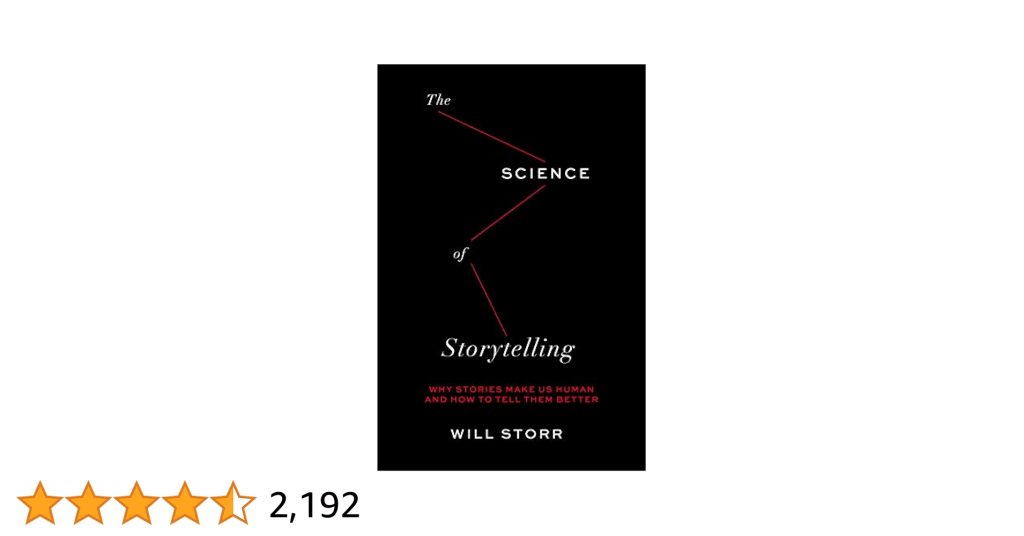The Art of Storytelling: How to Tell Stories that Captivate the Reader

The Intricacies of Engaging Narratives
Every great tale begins with a spark of imagination. It evolves into a narrative that has the potential to transport readers to different worlds or introduce them to unique perspectives. But what makes a story truly captivating? The blend of essential techniques and innate creativity is at the heart of effective storytelling.
To master the art of storytelling, it’s important to grasp key elements that engage audiences and resonate deeply. Consider the following features:
- Relatable Characters: Characters who resonate with readers create emotional connections. Think of the iconic figures in American literature, such as Huckleberry Finn or Jay Gatsby. These characters grapple with issues that are universally understood, such as freedom and ambition, allowing readers to see parts of themselves within their journeys.
- Compelling Conflict: Tension drives the narrative forward and keeps readers on edge. For instance, in J.K. Rowling’s Harry Potter series, the battle between good and evil is played out vividly through the conflicts between Harry and Voldemort. These struggles not only build suspense but also explore themes of courage and friendship, keeping readers invested in the outcome.
- Vivid Imagery: Descriptive language enhances visualization, immersing the reader in the story. A well-painted scene, such as the bustling streets of New York during a summer evening or the serene calm of a Montana sunset, can evoke strong feelings and memories, enabling readers to feel as if they are witnessing events firsthand.
Storytelling is not just an ancient tradition; it’s a vital tool in today’s world. Its applications span numerous fields such as education, marketing, and entertainment. For educators, using stories can engage students by placing complex concepts within relatable contexts. Brands like Nike and Apple have effectively utilized storytelling to build their identities, connect with customers on an emotional level, and inspire action through messaging that resonates with their target audience.
This article invites you to explore the nuances of storytelling. Unlock the secrets behind captivating stories that linger in the minds of readers long after they have turned the last page. Your journey to becoming a skilled storyteller starts here, encouraging you to deepen your understanding of narrative techniques and apply them in your own unique way.
DIVE DEEPER: Click here to discover innovative recycling techniques in crafts

Crafting the Connection: The Essentials of Narrative
One of the foremost elements in the art of storytelling is the establishment of a connection with the audience. Strong narratives go beyond simple plots; they embrace empathy and understanding for the reader’s experiences and emotions. To engage your audience effectively, consider integrating the following components:
- Authentic Voice: A distinctive voice can breathe life into a story, setting the tone and atmosphere. This voice can be shaped by the point of view chosen—whether first-person, second-person, or third-person—and creates an intimacy that draws readers in. For example, a memoir told from a personal perspective can allow readers to journey alongside the author, fostering a sense of shared experience.
- Dynamic Plot Structure: The structure of your story can significantly impact the reader’s engagement. Utilize techniques like the three-act structure—setup, confrontation, resolution—to create a clear trajectory and maintain suspense. Alternatively, nonlinear narratives can intrigue readers, dismantling their expectations and inviting them to actively piece together the timeline.
- Thematic Depth: Themes serve as the underlying threads that weave the narrative together. Masterful storytelling often contains layers of meaning that resonate with readers. Exploring themes such as love, loss, or resilience can evoke profound reflections and discussions, compelling readers to ponder the deeper significance of your story.
As the art of storytelling continues to evolve, so too do the platforms on which stories are shared. From traditional novels to social media snippets, the landscape of narrative has expanded dramatically. In today’s digital world, platforms like Instagram and TikTok have transformed storytelling methods, encouraging brevity while still needing to be impactful. These formats teach storytellers to convey emotions and narratives concisely, a valuable skill that can enhance versatility in more extended works as well.
Moreover, the cultural context in which a story is set can enhance its relatability. For instance, in the United States, stories that touch on social movements, regional quirks, or contemporary issues often resonate well with audiences, making them feel invested and understood. A well-crafted narrative can inspire change or help readers explore unfamiliar territories by approaching such topics with respect and insight.
In essence, storytelling is an intricate dance of techniques, creativity, and experience. It requires not only the ability to write compelling plots but also the skill to create a space where readers feel a sense of belonging. Understanding these essential components unlocks the potential to tell stories that captivate, inspire, and ultimately linger in the minds of the audience long after the final page is turned.
| Key Elements | Description |
|---|---|
| Character Development | Creating memorable characters that resonate with the audience encourages emotional investment in the story. |
| Conflict and Resolution | Engaging conflicts propel the narrative forward, providing thrilling momentum while resolutions offer payoff for readers. |
| Thematic Depth | Stories layered with strong themes reflect universal truths, inviting readers to explore deeper meanings. |
| Engaging Narrative Voice | A distinct narrative voice captivates readers, establishing tone and style while forging a connection with the audience. |
Within the realm of storytelling, the ability to blend character development, conflict, and thematic depth plays a crucial role in captivating readers. Each story must not only entertain but also invoke emotions through relatable characters and compelling struggles. Furthermore, the narrative voice employed can significantly influence how the audience perceives the tale being told. By intertwining these elements purposefully, an author can create stories that resonate well beyond the final page, inviting readers back into their worlds time and time again. Explore these components in further detail to unlock the exciting potential of your storytelling journey.
DISCOVER MORE: Click here to dive into creative DIY projects
Engaging the Imagination: Techniques to Enhance Storytelling
To master the art of storytelling, one must not only construct a compelling narrative but also employ various techniques that stimulate the reader’s imagination. Whether through the use of vivid imagery, relatable characters, or strategic pacing, engaging the audience on multiple levels can elevate your storytelling from ordinary to extraordinary. Explore the following techniques that can significantly enhance your narrative:
- Imagery and Sensory Details: Effective storytelling paints pictures in the reader’s mind. Utilize rich, sensory details to invoke sights, sounds, smells, and textures. For instance, describing the warmth of autumn sunshine filtering through multicolored leaves can transport readers to a particular moment in time. The more vividly you can capture the environment and emotions, the more immersed your audience will become.
- Character Development: Characters are the heart of any story. Well-developed characters with unique personalities, desires, and flaws allow readers to form emotional connections. Consider using backstory to provide depth; a character’s history can serve as a lens through which their motivations are understood. In creating complex characters, writers often employ techniques such as internal monologues or dialogue to reveal aspirations, fears, and conflicts seamlessly.
- Pacing and Tension: The rhythm of your narrative can dictate emotional engagement. Skillful pacing keeps readers on edge; too slow, and they may lose interest; too fast, and they risk becoming overwhelmed. Building tension through cliffhangers or suspenseful events can provoke curiosity and compel readers to continue. Interspersing moments of reflection or calm can provide a contrast that accentuates the peaks of tension, making them more impactful.
- Dialogue as Action: Dialogue can drive the narrative forward while revealing character traits and intentions. Writing natural and engaging dialogue allows readers to ‘hear’ the characters, immersing them deeper into the story. Consider how character dynamics, tension in dialogues, and the subtext can create layers within conversations, prompting readers to read between the lines.
In today’s landscape, incorporating multimedia elements can also enrich storytelling. Writers increasingly pair their words with illustrations, videos, or audio components to create a multisensory experience. For example, podcasts that weave narratives with sound effects or music can evoke emotion in ways that text alone may not. Platforms such as YouTube and TikTok have spawned new forms of storytelling, where concise yet impactful video narratives resonate with viewers.
Another avenue to explore is audience interaction. Modern narratives often invite readers to participate in some way—whether through comments, social media discussions, or branching story paths. This not only enhances engagement but also fosters a sense of community among readers, who may share their interpretations and reactions, deepening collective understanding. A story that evolves based on audience feedback can offer an exhilarating, collaborative experience.
Lastly, never underestimate the power of authenticity in storytelling. Audiences today are increasingly drawn to voices that resonate with genuine experiences and honesty. Sharing personal anecdotes or exploring universal themes through a unique lens can create a lasting impact. Readers appreciate vulnerability and truthfulness, often leading to profound connections that linger long after they finish the story.
By weaving these techniques into your storytelling, you will not only captivate your audience but also encourage them to delve into the narrative’s nuances. Strive to create a tapestry of storytelling that captivates and inspires curiosity, inviting readers to explore not just the story but also their reflections within it.
EXPLORE MORE: Click here for cozy DIY inspiration
Conclusion: Embracing the Journey of Storytelling
In exploring the art of storytelling, it becomes clear that crafting a narrative that captivates the reader is both an intricate art and a powerful communication tool. By employing techniques such as vivid imagery, dynamic character development, and careful pacing, writers can create stories that not only engage but also resonate deeply with their audience. Emphasizing authenticity and tapping into universal themes encourages readers to forge personal connections, ensuring that stories linger long after the final page is turned.
As the landscape of storytelling evolves, innovative methods, such as multimedia integration and audience participation, present new opportunities for engagement. Writers are now more equipped than ever to transcend traditional boundaries, allowing readers to experience narratives in dynamic and interactive ways. Such approaches foster a sense of community and shared experience, further enriching the power of storytelling.
Ultimately, storytelling is an invitation to reflect on our shared humanity. It encourages us to explore complexities of character, emotion, and context, bridging gaps between diverse perspectives. As you continue your journey in storytelling, remember that every story has the potential to inspire, connect, and create lasting impact. Embrace the challenge to not only tell your story but to ignite the imagination of your readers, inviting them to partake in the adventure that unfolds within the pages.
Related posts:
Artistic Journaling: Blending Writing and Visual Creativity
Interactive Fiction Writing: Creating Narratives that Allow the Reader to Choose Their Own Path
Character Development: Creating Memorable Figures in Your Stories
Exploring Creative Writing: Techniques to Unleash Your Imagination
Unlock Personal Growth The Power of Creative Writing for Self-Expression
Creating Worlds: The Importance of World-Building in Fiction

Linda Carter is a writer and creative hobbies expert specializing in crafting, DIY projects, and artistic exploration. With extensive experience helping individuals discover their creative potential and bring their ideas to life, Linda shares her knowledge on our platform. Her goal is to empower readers with practical tips, inspiring ideas, and step-by-step strategies for success in the world of creative hobbies.